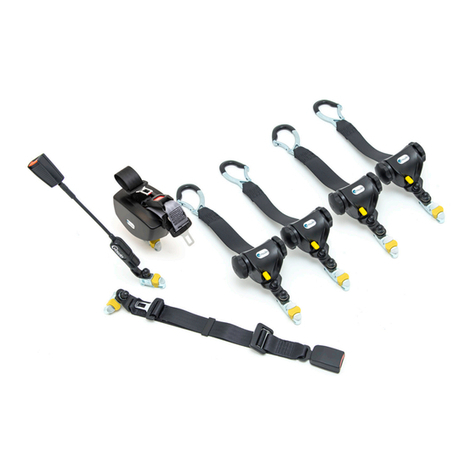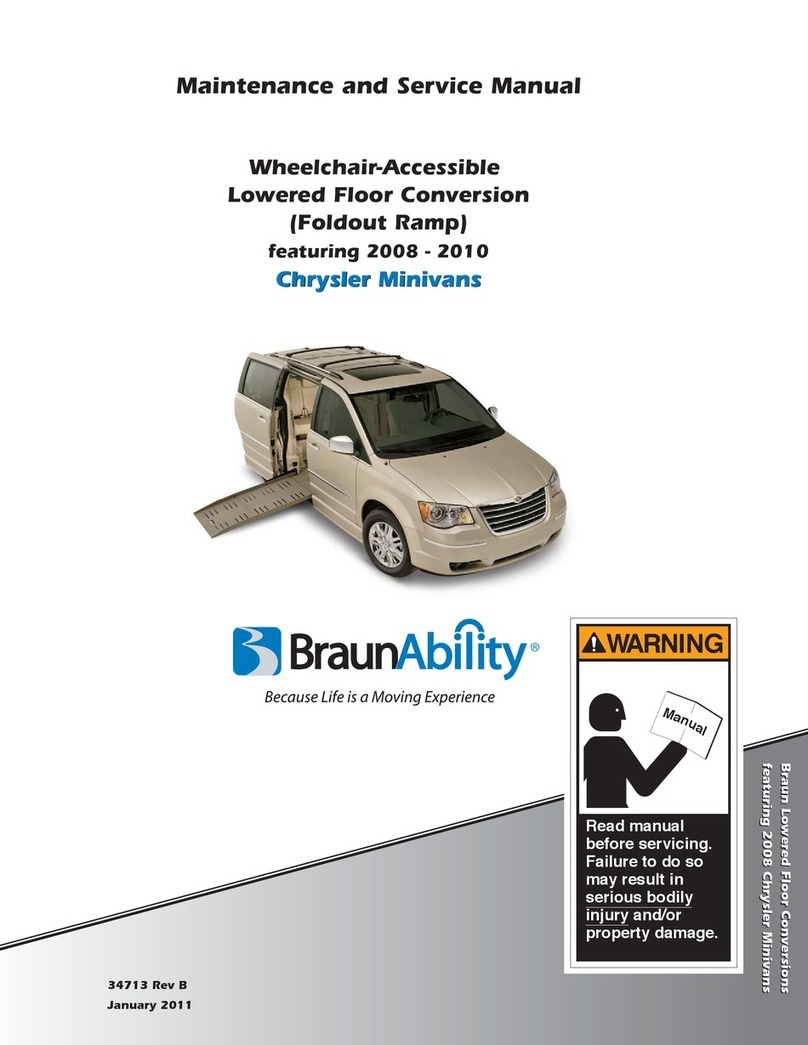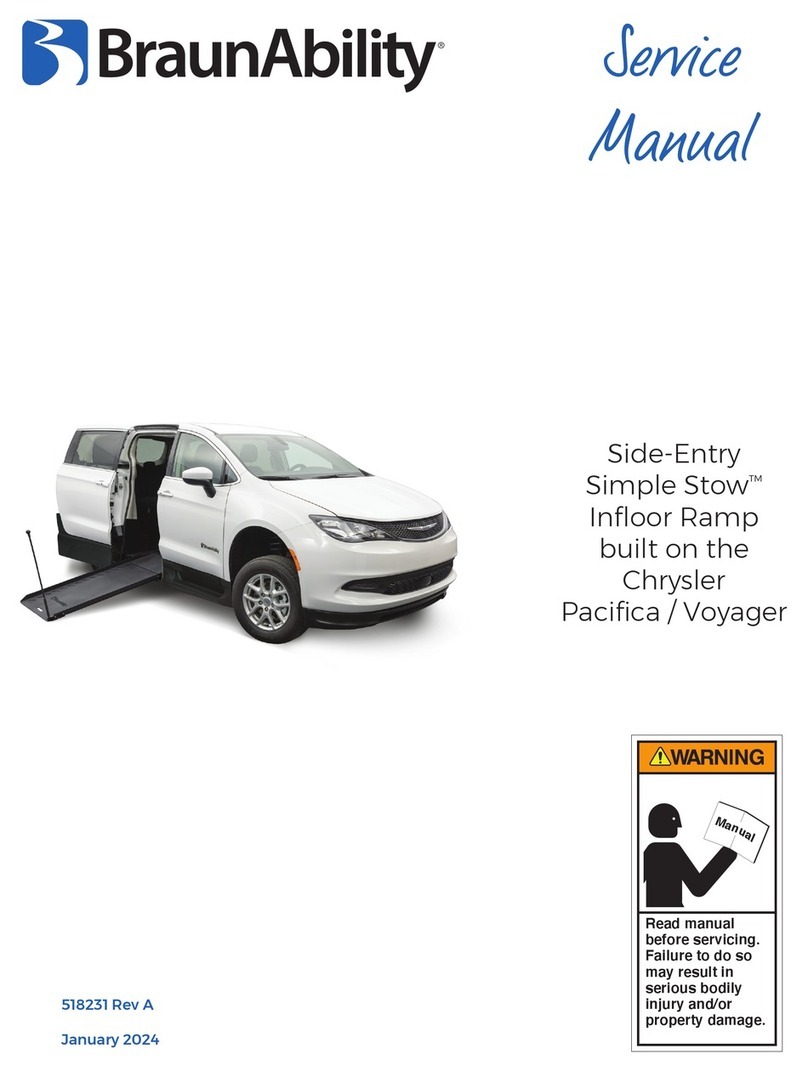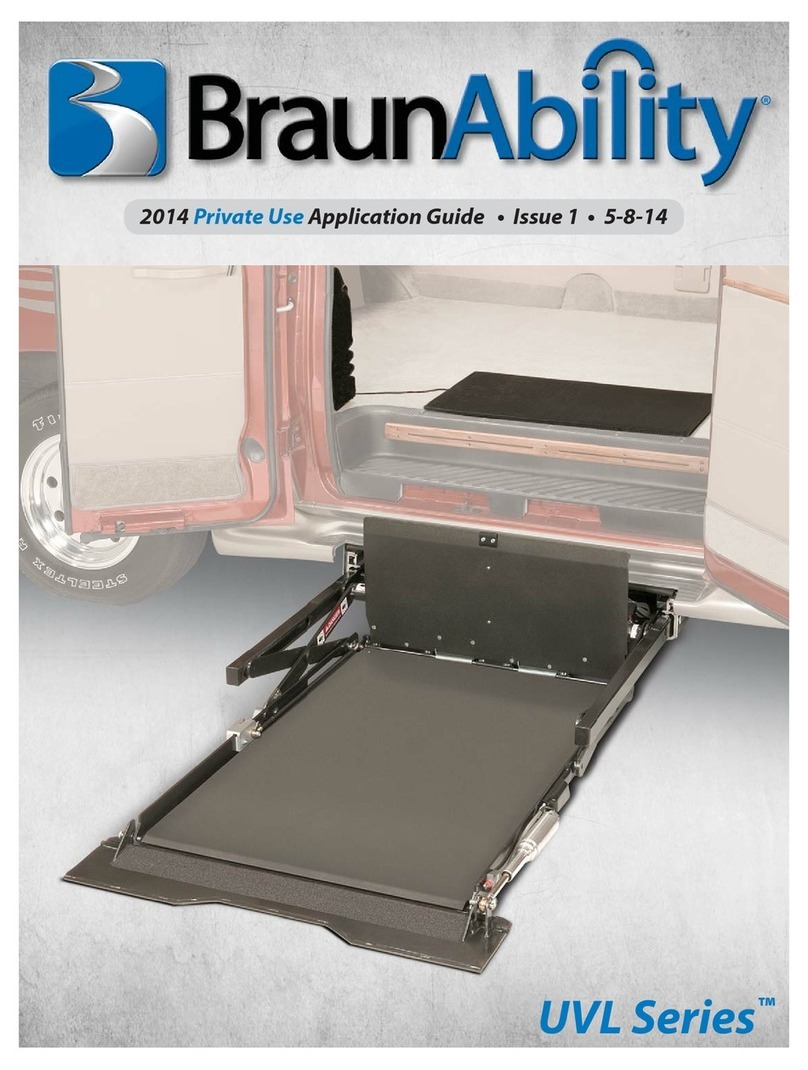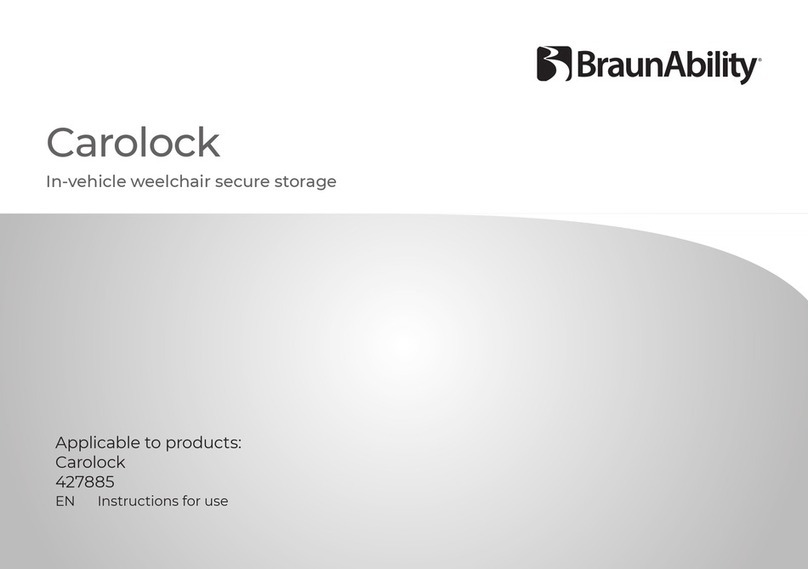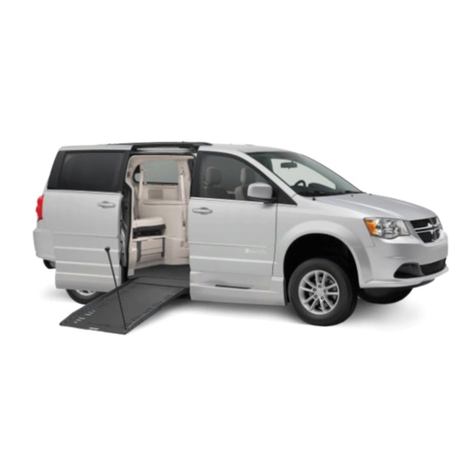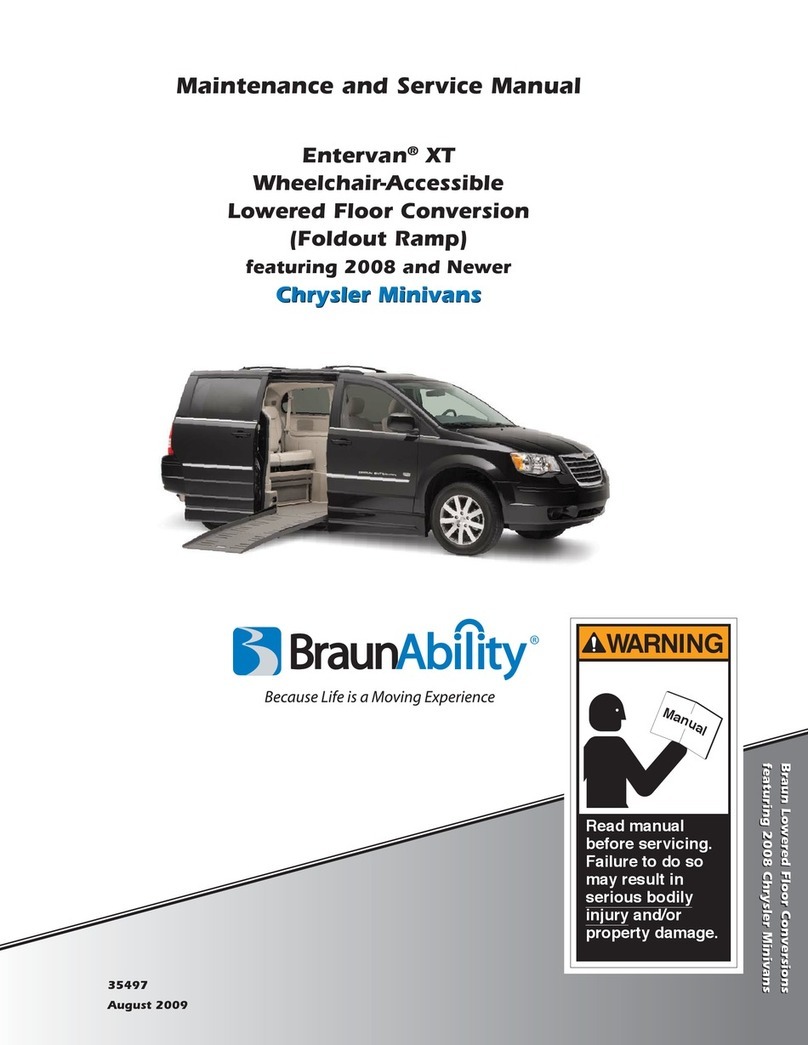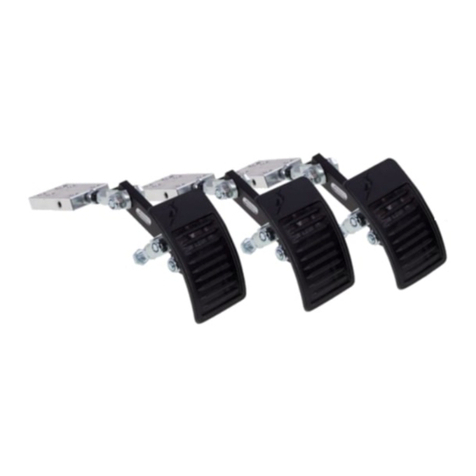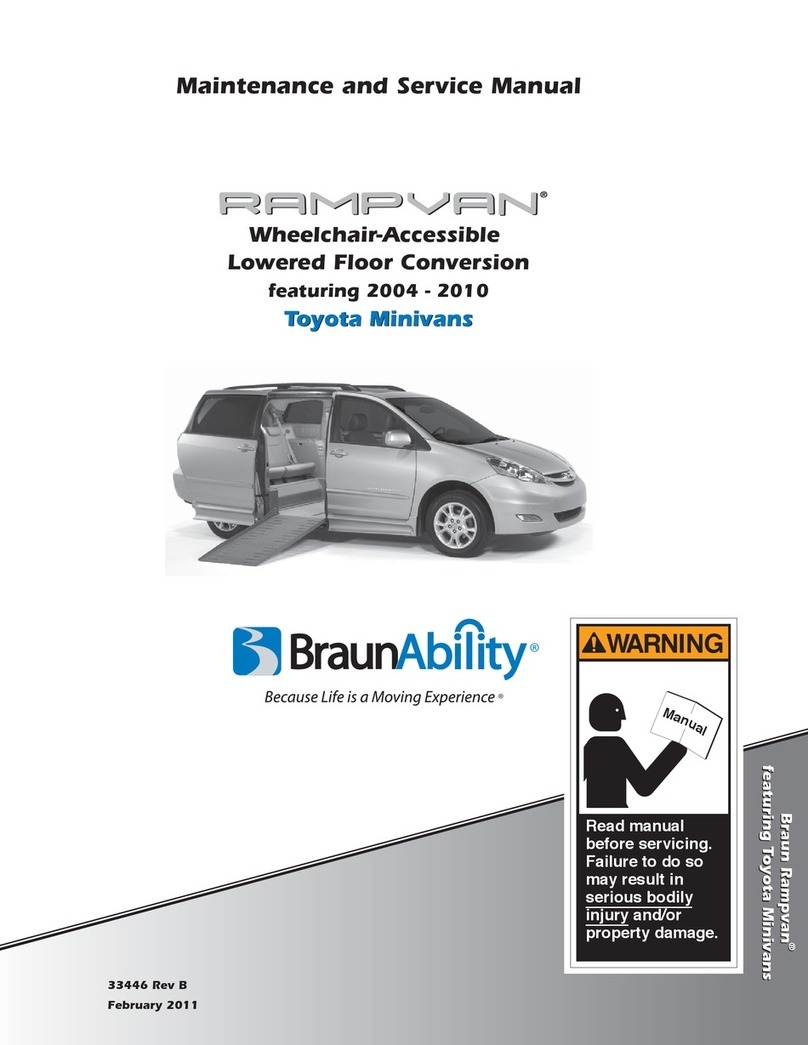
Page 2
Vehicle Identication Number (VIN)
WARRANTY AND REGISTRATION
M ob il i t y Con v e r sio n S e rv i ce A gr e e m e n t
Ve hicl e D e l iv e r y Ch e ckli st
W a r r a n t y Re g is t ra t i on
Cust om er Name Web Refer r al Code
Add re ss City Sta t e Zip
Phone Emai l
VI N ( la st 8 ) Dat e of Pu rch as e
TH E BRA UN CO RPO RATI O N M OBI LI T Y CON VER SI ON SER VI CE A GREEM EN T
This agr ee m en t is int en d ed to cla ri fy t h e se rv i ce r es pon si bi li ti es to th e Bra un m ob il it y con v er sio n aft er t h e i ni t ial de liv er y of t he
veh icl e. Th i s a g r ee m e n t sh a ll b e ex e cu t e d an d e le ct r o n ic al l y sub m i t t e d to Br a u n w i t h ea ch co n ve r s io n sa le .
List ed bel ow is th e iden t if ic at io n of th e B ra un au t ho r ized sel li ng Mob il it y Ret ail er , and t he Br au n a ut h or i zed loc al serv i cin g
Mobi li t y Reta ile r wh o has agr eed t o s er vice t he mob ili ty co nv ersi on p or ti on of t his v eh icle p er t he a ppl icab le Br aun se rv ice
ma nu al s an d g u ide lin es.
By s ig ni ng be low , t he pu rc ha ser of t he m obi li t y con ve rs ion ack n ow le dg es th e a do pt i on of th e loca l se rv i cin g Mobi li t y Re t ail er as
th e pr im ar y pr ov ide r of ser vi ce fo r t he m obi lit y conv ersi on p or ti on of t his v eh icle . Al l loc al ser vi cing r eta ile rs m ust b e an
aut h or i zed Bra un Mob il it y Ser v ice ex cel len ce Reta il er ( MSE- cer t if ie d i n veh i cle con ve rs ion s) .
Shou ld t he o wn er of t he m obilit y co nv er sion re qu ire s erv ice o ut sid e th e loca l ser vi cing ar ea, t hey m ay t ake t he mob ili ty
conv e rs ion t o any Br au n a ut h or i zed m ob ili t y con v er sio n r e t ail er lo cat ed wi t h in th e Unit e d S ta t es. I f th e own er n eed s a ssis t an ce
in iden t i fy in g a lo cal ser v ici ng m ob il it y r et ai ler , t he y ma y eit h er cal l 1 - 8 0 0- THE- LI FT, or che ck t he Bra un w ebs it e at :
ww w. br au nab ili ty .co m.
Not e: T hi s ag r eem e nt o nl y app li es t o t he ser vi cin g of th e B ra un m ob il it y con v er sio n . Ancil la ry eq u ipm e nt , su ch as t ie do wn s o r
han d con t ro ls, w ill be th e resp o nsi bi li t y o f th e mo bi lit y r et a ile r th at i nst a lle d th ose pr od u ct s an d wi ll not b e co v er ed un de r th e
Bra un m ob il it y con v er sio n war r an t y . If t he r e ar e issu es r e lat i ng t o t h e c ha ssi s an d/ o r con v er sio n, it w ou ld be in th e b est i nt e re st
of th e m o bi li t y veh ic le own er t o cont a ct t he Bra un au t ho r ize d l oca l s er vi cin g Mobi li ty Ret ai ler l ist ed be low b ef ore t ak in g th e
veh ic le to th ei r loca l c ar de ale r.
Reta iler S ign at ur e
____________________________________________________________________________________________
Se ll in g Mo b il it y Re t a i le r w i ll be t h e se r vi ci n g c om p a n y
Se ll in g Mo b il it y V e hi cl e Re t a il e r
Nam e Deal er #
Addr ess
City Sta t e Zip
Phone
Th e fo llo w in g co m pa ny t o pr ov id e se rv ic e:
Loca l Se r vi ci n g Mo bi l it y Re t a i le r
Nam e Deal er #
Addr ess
City Sta t e Zip
Phone
Ext e r i or
Ext er io r clean an d dam a ge - fr ee
Spar e t ire a nd j ack lo cat ion
Oper at i on of re m ot e cont r o l
Magn et i c en t r y (i f app li cab le)
Ext er io r act iv at i on of pow e r d oo r , kn eel in g a n d r am p
Manu al op er ati on of d oor an d ra m p fr om e xt eri or
In t er io r
I n t e r io r
Gaug es a nd in st r u m en ta t io n
Locat i on of int e ri or sw it ch es to op er at e access ibl e
fea tu res
Manu al op er ati on of d oor an d ra m p fr om i nt eri or
Oper at i on of ti e- d ow n s
Oper at ion o f ro ll & t um bl e seat ing ( if ap pli cab le)
Oper at i on of seat b elt s
Locat io n of Br aun c ont r olle r
Add i t io n a l
Revie w bo th OEM and Br au n own er 's m anu als
Expl ain t he Toyot a Servi ce Exch ang e I nfo rm ation
Progr a m ( Toy ot a Chass is O nl y)
Expl ain r ecom m e nd ed pr eve nt i ve ma in t ena nce an d
serv ice schedu les
Expl ain p ro ced ur es fo r war r an t y rep ai r wo rk
In f or m Cust om e r of deal er shi p serv i ce h ou rs
Adv ise Cust om er t o rec eiv e and m ai nt a in a si gn ed
reco r d o f a ll serv ic e w or k per f orm e d
Com pl et e a nd r et ur n wa r ra nt y r eg ist r at i on t o a ct iv at e
war r an t y
List all af te rm a rk et eq u ipm e nt . Use b ra nd na m es a nd
mo del nu m be rs wh er e p ossi bl e
I h ere by a ckn ow led ge t hat t he m obili ty de vic es app lica ble t o my v ehi cle ha ve b een d em on str at ed f or m e, and I f ull y un de rst an d
and can op er at e th is equ ip m en t . I hav e bee n a dv i sed th at w h eel cha ir s m a y not m a in ta in t he ir in t eg ri t y in th e e ve nt o f a
coll isio n. I h er eby r elea se an d hol d ha rm les s th e Ori gin al Veh icl e Manu fa ctu re r, Th e Br aun Co rp ora ti on, an d it s in dep end ent
deal er s fr om an y li abi lit y asso cia t ed wi th in j u ry t o my p er son an d p r op er t y as a res ul t of m y use o f a w he el cha ir du r in g a
coll isio n. I h av e rea d and u nd erst an d th is en ti re f orm , includ in g all d iscla im er s and t he Br aun fa ct ory Lim ited Wa rr ant y . Al l of
th e i nf o rm a t io n I h av e pr ov id ed is c or r ect .
Cust o m e r :
I ack no wl ed ge th at a ll it em s check e d h av e been r ev iew e d w i th
me .
____________________________________________________
_
Cust om e r Sign at u r e / Dat e
Sa le s Co n su l t a nt :
All i t em s ch eck ed ha ve bee n r ev ie we d w it h t he cust o m er.
____________________________________________________
_
Consu lt a nt Si gn at u r e / D at e
The deal er ag r ees t o ele ct r on ica ll y sub m it t hi s co m p let e d Mo bi li t y Conv er si on Ser vi ce Agr eem en t t o B ra un Ab il it y im m e di at el y
aft e r th e cu st om er r ev ie w ta ke s p lac e. Add it i on all y , t h e dea ler ag r ees to m ain t ai n a cop y of th is ex ecu t ed docu m e nt , w it h th e
app ro pr iat e sig nat ur es af fi xed , fo r a pe ri od of six ( 6) y ear s.
To ens ur e th at c om ple ted r ecor ds ar e m ain ta ine d by t he de ale r, Br au nAb ili ty sh all p eri odi call y au dit t h e app lica ble r ecor ds t o
det er m ine d eal er con fo rm ance. The de aler ag re es to c oop era te w it h Br au nAbi lit y i n pr ov idi ng co pie s of t hes e reco rd s. Failu re t o
com pl y wit h t hes e ter ms m ay n ull ify a ny ob lig at io n th at Br au n Abi lit y m a y h a ve to pa y war r an t y clai m s s ub m it t ed by t h e d eal er .
I ac kn ow ledg e t he ab ove a gr eem en t.
®
®
Examine your vehicle for any damage. Should any
damage have occurred during delivery, notify the
carrier at once with any claims.
Review the service agreement, delivery checklist
and warranty registration form with your sales repre-
sentative. The form must be signed by the con-
sumer and retailer. A hard copy is available upon
request.
The warranty registration form must be processed
electronically by the sales representative to activate
the warranty. See the Warranty Booklet for detailed
terms and provisions applicable to this vehicle.
Record the last eight digits of the vehicle identica-
tion number (VIN) in the space provided for future
reference. This information must be provided when
ling a warranty claim or ordering parts.
